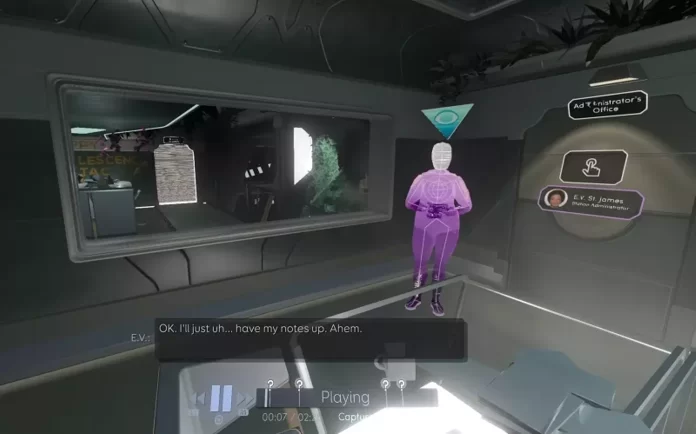Sometimes it’s helpful to think of being LGBTQ+ as a character class in a video game, like barbarian, druid, or thief. Being LGBTQ+ can open up your romance option paths and lead to more endings, but some tribes will be hostile to you and attack on sight. If you’re trans, negative status effect-clearing items will be harder to come by. Certainly most of the cleric-specific sidequests will be closed.
This probably sounds like disassociation, but who could blame me? This year has been devastating for LGBTQ+ people. There were more than 200 anti-LGBTQ+ bills filed in the Texas Legislature in 2025, the highest number in the nation. A dozen passed, limiting access to healthcare, freedom of expression, and protections. Things weren’t great before that. A 2023 survey from The Trevor Project showed that most LGBTQ+ youth are unable to get mental health care, while less than half of them said they lived in affirming households. As official actions attack LGBTQ+ people mount, the downstream effects are grow increasingly hostile.
Lots of us turn to video games. There’s no denying that gaming has gotten much queerer in the last decade and change. Though games have had gender-sex minority characters at least as far back as 1994’s Final Fantasy VI, it’s relatively recent for games to overtly focus on LGBTQ+ stories rather than have them as side content.
In 2024, GLAAD surveyed LGBTQ+ gamers and found that many often found the game space more welcoming than the real world, especially with the increase in representation. Seventy-two percent said that playing games with LGBTQ+ characters made them feel better about themselves. Despite this, only about 2 percent of games contain LGBTQ+ characters, far below the number of LGBTQ+ in the general population.
Part of the refuge aspect of games is because of the growth of the medium into a diverse mechanical interactive space. Things have come a long way since minimalist platformers and shooters. Even Mortal Kombat has a multi-hour story mode these days, leading to a higher quality of storytelling. Sure, you can shoot things as a non-binary hero in Rollerdrome, but you can also explore an abandoned space station in Tacoma, build a community as any gender or sexuality in Stardew Valley, hack and slash your way through Baldur’s Gate 3, and anything in between. More options for play means greater opportunities for queer stories.
As a spokesperson from Mobile Premier League put it in an article, “We’ve seen how modular gaming networks can mirror therapeutic group structures. By allowing players to curate their communities and narratives, these platforms offer adaptive support that traditional systems often can’t, enabling queer youth to find both belonging and autonomy in equal measure.”
Interactive media is fundamentally different from other art forms. Because the player becomes part of the art, it leads to a great level of immersion. More importantly for LGBTQ+ people, it allows play in a safe environment that may be dangerous in the real world. I’ve talked to loads of gamers who felt free to explore same-sex romance options in a game in ways that that they felt they couldn’t do outside the game space. Character customization has been a boon for trans gamers to craft new identities free of the all the bigotry and legal hurdles the world has created.
The quality of the representation matters, though. I was talking to the teenage child of a friend about this on Facebook, and they dropped this absolute truth bomb on me.
“I don’t want to play a game looking for an escape only to encounter the same bigotry I face in real life. If a game doesn’t have any take on queerness, great! I can just play a game without thinking about it. If it has positive takes on queer characters and content, even better. I can escape to a world where I’m valid and accepted. On the flip side, I expect that’s a big reason why bigots hate seeing queer content in games. They go to play so they can feel safe in their hate, only to see the very people they despise represented in their ‘safe space.’ That’s why it’s important to have queer content if it can apply in games because it’s another area bigots are trying to erase us.”
The hatred does happen in the game space. As someone that covered GamerGate in detail, organized mobs of angry, right-wing gamers and outright Nazis have done their best to make any game with queer themes a toxic place through doxxing, infiltration, and a million YouTube videos calling LGBTQ+ existence the end of civilization. The long and brutal attacks on video game inclusiveness firms continues to be a core part of the the right-wing culture war.
However, it’s a war I think they are losing. The game space is simply too dynamic and malleable to contain in fascist boxes. LGBTQ+ gamers make up 17 percent of the market, a number that is only growing. The sheer possibilities of a created, interactive world make it much more difficult to bully the creators out of existence. Maybe bigots can scream until Pixar removes a trans character from one show or review bomb a tentpole blockbuster, but there are 40 games a day being released on Steam alone. Even the most dedicated homophobe just doesn’t have resources to hate that much.
Games are getting queerer and more trans. They offer refuge and a feeling of control missing from real life, where agency is being stripped away daily. In a game, the rules are fair and you can fight back. That makes them a sanctuary, as well as, hopefully, practice for fighting back.
